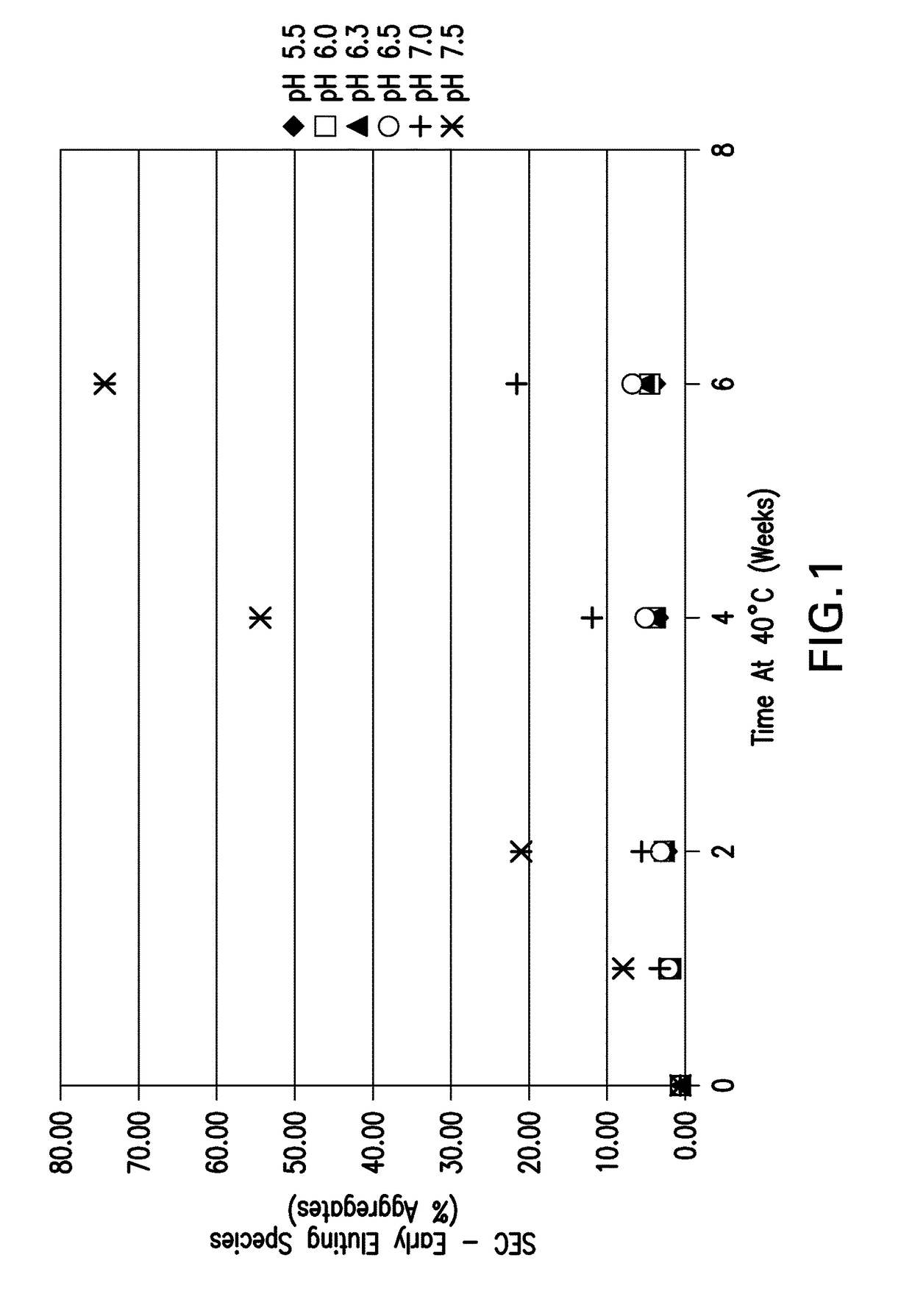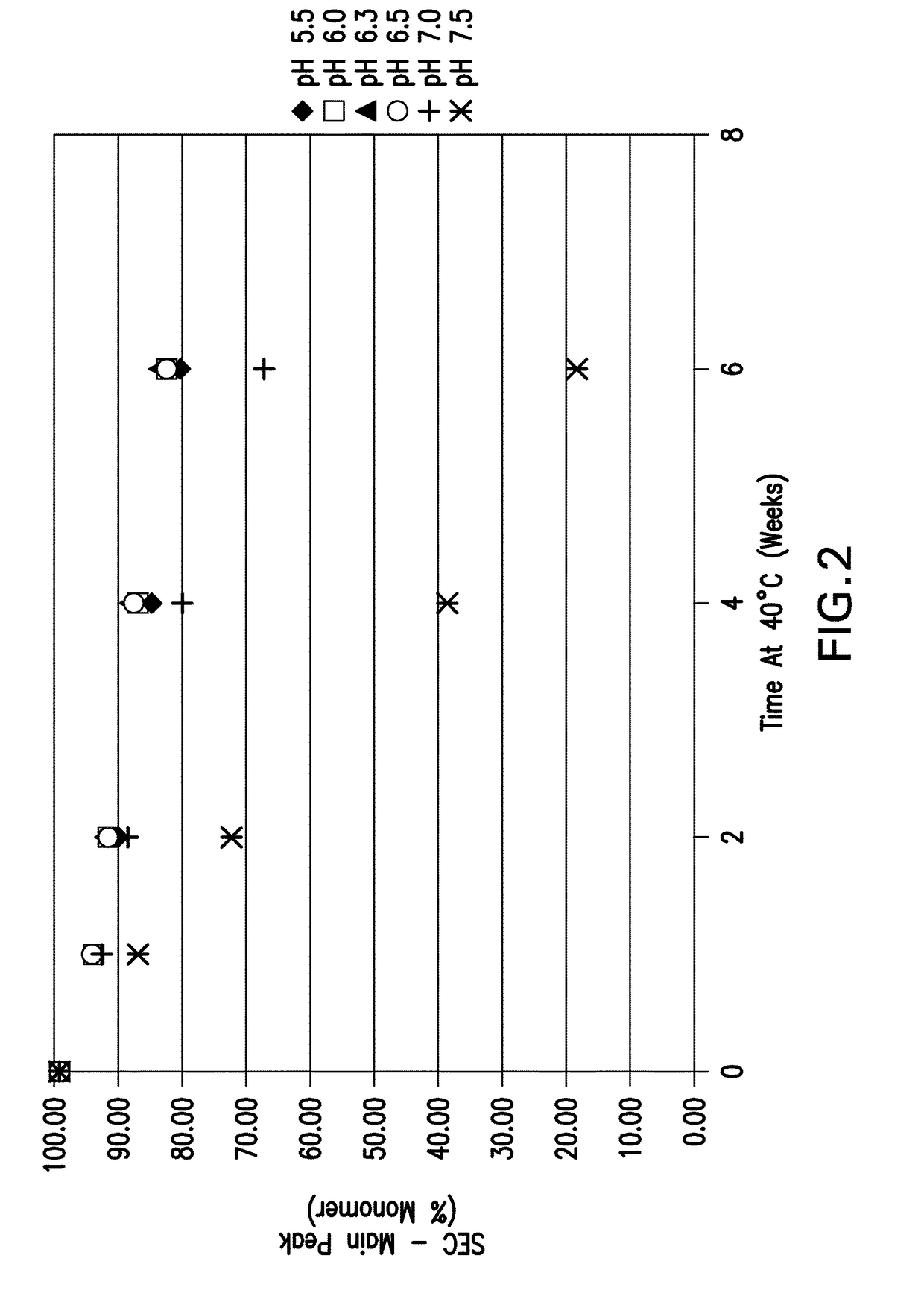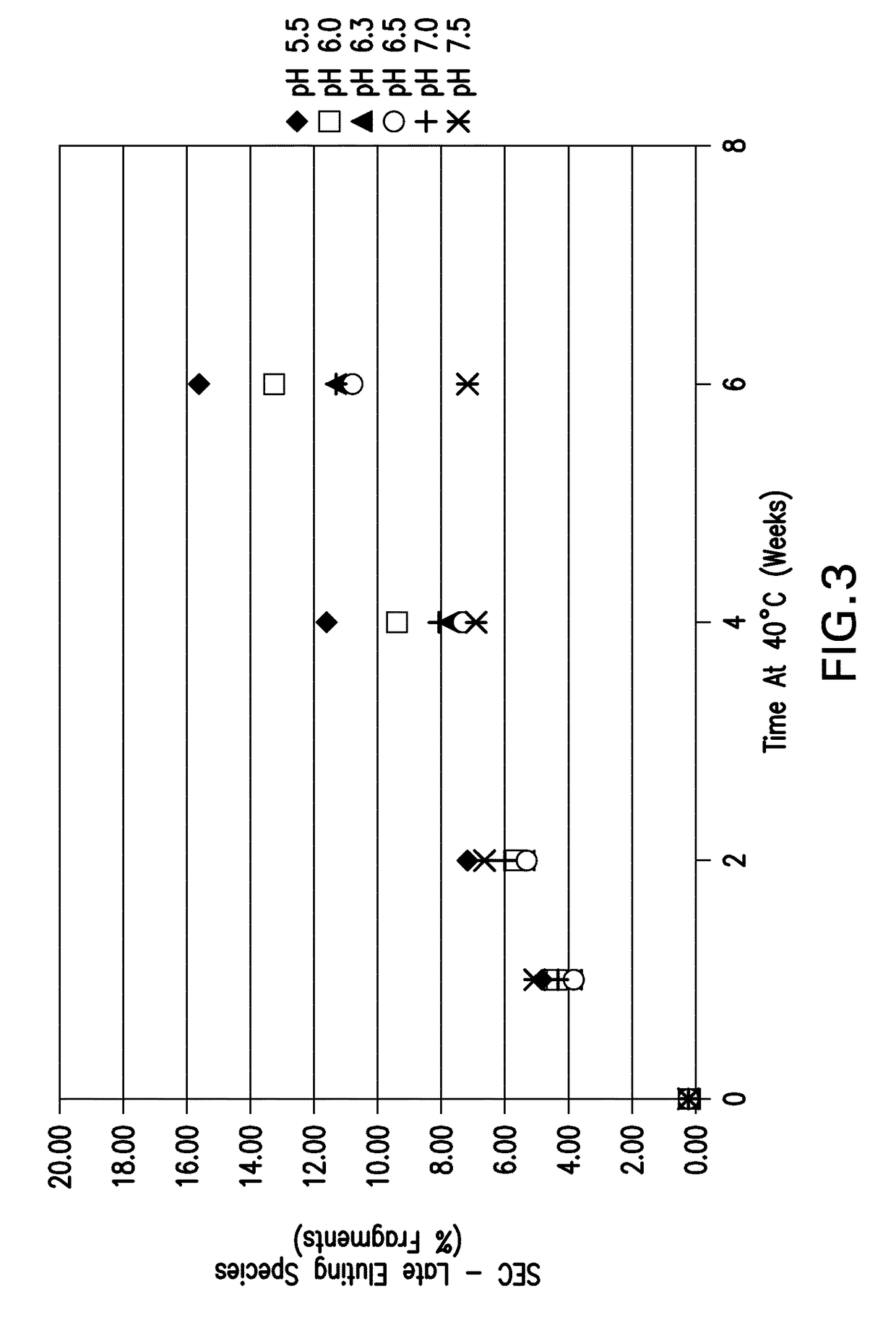Liquid formulations for TNFR:Fc fusion proteins
a technology of fusion proteins and liquid formulations, applied in the field of biopharmaceutical protein formulations, can solve the problems of unsatisfactory change in the identity, strength or purity of the produ
- Summary
- Abstract
- Description
- Claims
- Application Information
AI Technical Summary
Benefits of technology
Problems solved by technology
Method used
Image
Examples
example 1
Production of TNFR:Fc in CHO Cells
[0144]Recombinant biosimilar etanercept comprising a soluble form of the human p75 TNF receptor fused to an Fc domain of a human immunoglobulin protein (TNFR:Fc) was expressed in Chinese Hamster Ovary cells. Post fermentation and harvest of the cells, the supernatant was subjected to a first round of purification using Protein A chromatography to capture the fusion protein, followed by virus inactivation at low pH. The process intermediate post virus inactivation was then neutralized and underwent two more rounds of purification, via mixed mode chromatography (ceramic hydroxyapatite resin), followed by hydrophobic interaction chromatography (HIC). Post HIC column purification, the process intermediate was subjected to virus filtration process via pressure filtration. The final process intermediate then underwent ultrafiltration / diafiltration into the final formulation buffer to achieve a final protein concentration between 27-33 mg / mL in 10 mM Tris,...
example 2
pH Screen
Purpose:
[0146]The objective of the pH screen was to determine the optimal pH (range) based on stability and biophysical characterization.
[0147]The pH screen was performed using an etanercept concentration of approximately 30 mg / mL. Formulations between pH 5.5-7.5 in 25 mM sodium phosphate buffer were placed on accelerated stability at 40° C. for up to 6 weeks. The samples were tested via pH, UV for protein concentration, OD 350 nm, HP-SEC and HIC.
[0148]The 25 mM sodium phosphate buffers were prepared by first preparing a 200 mM monobasic sodium phosphate stock solution and a 200 mM dibasic sodium phosphate stock solution. The stock solutions were then diluted to 25 mM. The 25 mM dibasic sodium phosphate solution was titrated into the 25 mM monobasic sodium phosphate solution until the desired pH was reached for each buffer.
Data:
[0149]The HP-SEC data depicting % aggregates, % monomer and % fragments are shown in FIG. 1, FIG. 2, and FIG. 3, respectively. The for...
example 3
Buffer Screen
Purpose:
[0151]Having determined the optimal pH range for the etanercept biosimilar, a screen was performed to evaluate the stability of etanercept in potential buffers at pH 6.3.
[0152]The buffer screen was performed using an etanercept concentration of approximately 30 mg / mL. Formulations comprised of the following buffers were placed on accelerated stability at 40° C. for up to 6 weeks: Citrate, Citrate Phosphate, Histidine, Maleate, Sodium Phosphate, Tris and Tris-Maleate. Citrate buffer was prepared by first preparing stock solutions of 25 mM citric acid and 25 mM sodium citrate. The citric acid solution was titrated into the sodium citrate solution until the desired pH was reached.
[0153]Citrate-phosphate buffer was prepared by first preparing stock solutions of citric acid and dibasic sodium phosphate heptahydrate. The citric acid solution was titrated into the sodium phosphate solution until the desired pH was reached. The resulting solution was dilut...
PUM
| Property | Measurement | Unit |
|---|---|---|
| pH | aaaaa | aaaaa |
| pH | aaaaa | aaaaa |
| pH | aaaaa | aaaaa |
Abstract
Description
Claims
Application Information
 Login to View More
Login to View More - R&D
- Intellectual Property
- Life Sciences
- Materials
- Tech Scout
- Unparalleled Data Quality
- Higher Quality Content
- 60% Fewer Hallucinations
Browse by: Latest US Patents, China's latest patents, Technical Efficacy Thesaurus, Application Domain, Technology Topic, Popular Technical Reports.
© 2025 PatSnap. All rights reserved.Legal|Privacy policy|Modern Slavery Act Transparency Statement|Sitemap|About US| Contact US: help@patsnap.com



